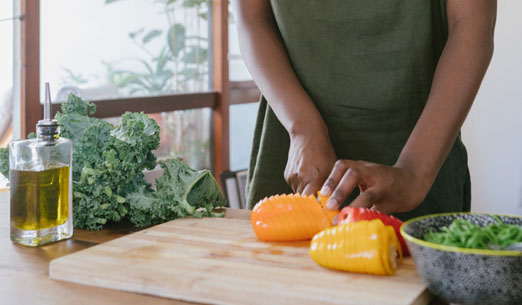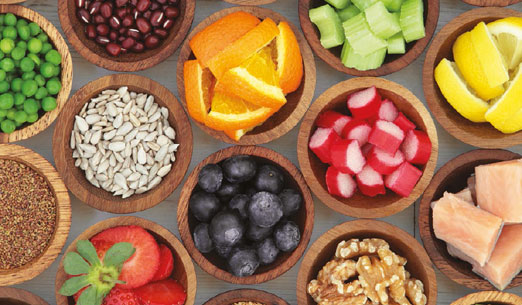Alternate Day Diet - Weight Loss Made Easy
Health and wellbeing Diet

Imagine a diet without any restrictions…every other day. When on a Monday you are free to eat what you like, and on a Tuesday you monitor your caloric intake. As you limit your intake on low calorie days, you will always have a high calorie day to look forward to – the very next day.
Enjoy the foods you like… without guilt
Most diets permanently restrict the foods you can eat, which makes them much more difficult to stick to and less likely to work for you. But this is a diet that will allow you to continue to eat the foods you want and still lose weight. Here's how:
Alternate-day calorie restriction
The Alternate-Day Diet: weight loss and weight maintenance made as easy and as practical as possible. Research has shown that restricting calorie intake on alternative days increases SIRT1 gene activity in fat cells. This causes fat to move from your fat cells into the bloodstream where it is used as energy. This causes your metabolism to increase which means your body will burn more fat. This state also inhibits fat storage by switching of the PPAR-gamma gene. PPAR-gamma is responsible for storing fat in the body.
Regardless of the type of food you eat on your high calorie days, when you restrict your calories on low days, a stress response is activated in the body that turns on the SIRT1, or "skinny gene”. The weight loss benefits of this stress response are more closely linked to the amount of calories being consumed rather than the specific foods themselves. The evidence shows that you can eat the foods you would like on high days and still lose weight.
The alternate-day calorie restriction diet not only encourages your body to burn more fat, but also to store less fat. It's the ideal way for you to achieve a healthy body weight and improve your health without the stress and difficulty of complying with a traditional, restricted diet. Follow the diet and instructions in this book and you'll see results within 7-14 days.
The Alternate-Day Diet: weight loss and weight maintenance made as easy and as practical as possible.
The 3 Phases of the Alternate-Day Diet
There are three phases of the alternate-day diet you will need to follow to get the best results.
Phase 1: Pre-diet detox
Complete this stage before you begin your alternate-day calorie restriction. This part of the diet is designed to clear your body of accumulated toxins which will otherwise hamper your weight loss efforts. The pre-diet detox lasts 1-2 weeks and will maximise the weight loss you see over the next two phases of the diet.
Phase 2: Low day meal replacements
You will be getting all your calories on your low days from meal replacement shakes during this phase. This part of the diet is the most difficult, but only lasts two weeks. You will still be able to eat what you want to every other day, on your high calorie days. will maximise the weight loss you see over the next two phases of the diet.
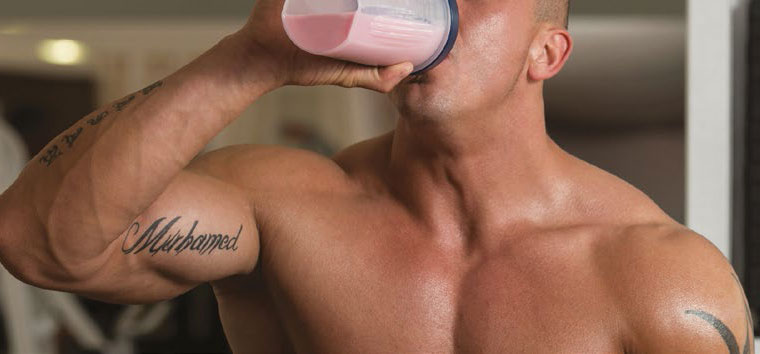
Phase 3: Ongoing dieting
From this part of the diet your low day calories will not be so restricted, and will no longer involve meal replacement shakes. This phase is suitable for use as an ongoing diet plan and can last as long as you like.
A note about high calorie days:
The goal of your high calorie days is to feel satisfied without intentionally overeating. Although you will have the freedom to eat the foods you would like on high days and still reap the benefits of the diet, it is important to remember that, for optimal health, there are foods you should eat more often, such as fruits and vegetables, and there are foods you should try to limit, like those containing trans fats.
It's important to enjoy eating on your high calorie days so you won't feel so deprived when you restrict your calories on low days.
Most people on the alternate-day diet find that, despite restricting their calories on low calorie days, they are no hungrier on high days than they would be if they were not on the diet, and in some cases they are less hungry. If you're not as hungry on your high days as you thought you would be, it's okay to eat less than your regular daily allowance. Don't overeat just because you can.
Phase One: Pre-Diet Detox
Time to complete: 1-2 weeks
To prime your body for weight loss, you need to clear your digestive tract of all the toxins it has accumulated over the years from processed foods, toxins and other chemicals. These toxins are stored in your fat cells, causing the fat cells to expand. If you have too many toxins, your body creates new fat cells to store them in. This is why toxins are a major barrier to you losing weight. By getting rid of those toxins, you can shrink your fat cells, not to mention all the other benefits for your overall health. Getting rid of these toxins will ensure your body is in the best starting position to lose weight. You should follow the pre-diet detox for at least one week; ideally two.
Benefits of the pre-diet detox:
- Eliminate harmful toxins causing your fat cells to shrink
- Lose excess weight
- Improve your overall health and well being
- Strengthen your immune system
- Improve your energy levels
- Sleep better
- Break down emotional ties that you have with food
How toxins contribute to weight gain
Much of your body fat is a result of three things; an incorrect diet, a poorly functioning liver (your major metabolism organ), and a clogged up colon. If you eat lots of processed foods, dairy, red meat, preservatives, etc you are ingesting an enormous amount of toxins. These toxins overwhelm your your liver and your colon (your two main detox organs). This happens over a long period of time, but eventually causes your liver and colon to become sluggish, slowing your metabolism and encouraging your body to store fat. For most people, this fat will be stored in the areas close to these two organs; their belly, bum, hips, and thighs.

How your liver functions
Your liver is your body's largest internal organ. It processes nutrients from your food and filters out toxins through your blood. Toxins and waste not needed by the body are carried by digestive juices called bile acids into the small intestines and out of your body. These bile acids are then re-circulated back into the small intestines and the cycle starts again. But If this re-circulated fluid is still high in fat and/or toxins, this will lead to excessive weight gain, making it almost impossible to lose weight permanently.
If the liver does not regulate fat metabolism efficiently, weight gain tends to occur around the belly area. Another sign of a clogged up, slowly functioning liver can be a roll of fat around the upper abdomen. If the liver filter is blocked up with toxins and excess waste, it can't remove the small fat globules (chylomicrons) that circulate in the blood stream. These extra chylomicrons then build up in other organs and in fatty deposits under the skin which can cause cellulite in your bum, thighs, arms and belly. It can be almost impossible to lose abdominal fat until the liver function is improved.
Put simply, when your liver is clogged up with junk, it will make you fat, no matter how much dieting and exercise you do. Clean out your liver and it will turn right back into the healthy, fat burning, metabolism-boosting organ it once was. And that's exactly what this pre-diet detox is designed to do.
Liver cleansing foods
To help clear your liver of toxins, during the next 1-2 weeks you should eat only the foods listed, although you can eat as much of these foods as you like. Try to stick to organic foods where possible and ensure you stay well hydrated by drinking at least two litres of water each day. During this detox, try and walk for at least 30 minutes to an hour every day. This is best done outside, and you should aim to break a slight sweat. You should continue to keep the foods listed in your diet even after the detox phase to help ensure your liver is functioning healthily.

Leafy green vegetables
One of the most important liver cleansing foods you will be eating for the next few weeks, leafy greens can be eaten raw, cooked or juiced. They are high in plant chlorophylls which help to remove environmental toxins from your bloodstream. Leafy green vegetables offer powerful protection for you liver because of their ability to neutralize heavy metals, chemicals and pesticides. They also help increase the creation and flow of bile, the substance that removes waste from the your liver and blood. Try incorporating plenty of leafy greens such as spinach, chicory, chard, watercress and lettuce into your diet.
Cruciferous Vegetables
Cruciferous vegetables such as broccoli, kale, sprouts, bok choi and cauliflower will increase the amount of glucosinolate in your system, which aids enzyme production in the liver. These natural enzymes will help flush out carcinogens and other toxins from your body.
Cabbage
Another cruciferous vegetable, cabbage helps stimulate crucial detoxifying enzymes that will help flush out toxins from your body. As an alternative to plain cabbage, try coleslaw, kimchi or sauerkraut.
Beets and Carrots
These are both rich in plant-flavonoids and beta-carotene, which can help stimulate and improve your liver function.
Avocados
This nutrient-dense food helps the body produce glutathione, which is necessary for your liver to cleanse harmful toxins. Studies have shown that those eating avocados regularly have improved liver health.
Lemons & Limes
Citrus fruits are very high in vitamin C which helps the body synthesize toxic material into substances that can be absorbed by water. Some freshly squeezed lemon or lime juice in the morning will help stimulate your liver.
Grapefruit
Grapefruit increases the natural cleansing processes of the liver because it is high in vitamin C and antioxidants, Freshly-squeezed grapefruit juice will help boost production of liver detoxification enzymes that help flush out carcinogens and other toxins.
Apples
High in pectin, apples encourage the body to cleanse and release toxins from the digestive tract. This makes it easier for the liver to handle the toxic load during the cleansing process.
Garlic
Just a small amount of garlic can activate liver enzymes that help your body flush out toxins. It is also high in allicin and selenium, two natural compounds that aid in liver cleansing.
Walnuts
Walnuts contain high amounts of the amino acid arginine, which helps the liver with detoxifying. They are also high in glutathione and omega-3 fatty acids which support liver cleansing.
Olive Oil
Cold-pressed organic oils such as olive, hemp and flax-seed are great for the liver, when used in moderation. They provide a lipid base that can suck up harmful toxins, taking some of the burden of the liver.

Green Tea
A great tasting, refreshing drink, green tea rich in plant antioxidants known as catechins, which are known to help the livers overall functions.
Turmeric
Turmeric helps boost liver detox by assisting enzymes that flush out dietary carcinogens. Try adding some into your cooking for an instant liver pick me up.
You may also eat the following natural foods:
- Fruit (preferably organic)
- Any vegetables (preferably organic)
- Raw nuts and seeds
- Legumes (beans)
- Coconut oil (for cooking)
- Extra virgin olive oil (for cooking or salad dressing)
- Lemon juice (for salad dressing)
You may not eat the following foods during the detox phase:
- Dairy (milk, cheese, ice cream, yoghurt)
- Meat
- Bread
- Pastries
- Eggs
- Grains or rice
- Canned fruit or vegetables
- Anything containing white flour
- Sugar or artificial sweeteners
Phase two: low day meal replacements
Time to complete: 2 weeks
Now you've completed your detox, it's time to move onto the second phase of the diet. This is the most restrictive phase, so will also be the most difficult. However, it only lasts two weeks, which isn't very long, especially when the restriction is limited to every other day, which means a total of only seven days!
On your low calorie days you will be restricted to 500 calories per day; which is about 20 percent of the total calories eaten daily by the average overweight woman.
The reason for this is if you consume 20 percent of your normal calories on alternate days, you will be reducing your total calorie consumption by 40 percent a day (a total reduction of 80 percent - on the down day – spread over a two-day period). This means that, on average, you'll be eating 60 percent of what you would eat normally. Eating 20 percent of what they normally would every other day is tolerable for most people.
Using meal replacement shakes on low calorie days
For the next two weeks, you will be getting your 500 low day calories specifically from meal replacement shakes. You'll be more likely to succeed with the diet when you use meal replacement shakes instead of food for the first two weeks. There are several advantages to using meal replacement shakes:
- Shakes make it very easy for you to know exactly how many calories you are taking in, ensuring you stick to the 500 calorie allowance.
- Unlike regular food, you are only likely to drink your shakes when you really need to, giving you a better feeling of what it actually means to be hungry.
- You won't have to think about what you're going to eat next, which should help you think less about food on your low calorie days.
- Shakes are quick to prepare and easy to carry with you throughout the day so you can keep sipping them when you feel hungry.
Meal replacement shakes vary in protein, fat, and carbohydrate content. Those that are lowest in carbohydrates and sugar will be your best options. But the amount of sugar in the shake is less important than the total calories you consume, so find the one that tastes best for you.

Recommended meal replacement shake: 7 Day Diet Shake
The 7 Day Diet Shake recommended above will provide you with a balanced, nutritious, high protein meal replacement for your low calorie days. It contains 20 different vitamins and minerals to ensure you are getting all your necessary nutrients while you diet. It also contains only 100 calories per serving, which means you could have up to 5 shakes per day on your low calorie days.
Making the most of your shake
Try to avoid drinking your entire shake all at once. Instead, drink them in small amounts and make them last. Remember, you are limited to 500 calories per day on your low days, so how many calories in your shakes will determine how many shakes you can have a day.
It is up to you how you want to spread your shakes out throughout the day. Using the recommended 7 Day Diet Shake as an example, with 100 calories per serving, you could choose to have five shakes; one at breakfast, one as a mid-morning snack, another for lunch and then dinner and your final one before bed. Or you could choose to have one shake for breakfast, double up with a large 200 calorie shake for lunch to keep you going throughout the afternoon, and have your final two shakes for dinner and before bed.
What to expect on low calorie days
Your first low calorie day will be the hardest. But after you've had your first 100-200 calories from your breakfast and mid-morning/lunch shakes, you should find that, although you may not be full, you are not starving.
The real temptation is likely to come between 11 a.m. and 2.30 p.m and by late afternoon you'll undoubtedly be quite hungry and fatigued. When this happens, re-energise yourself by taking a short rest, drink plenty of water to rehydrate yourself, and have another 100 calories from your shake.
The hours between dinner and bedtime are likely to be the most challenging of all because you won't be distracted by work or other daily activities. It's important to have a procedure to follow when the pressure to eat seems too great. Sit down, close your eyes and take some deep breaths, inhaling and exhaling slowly. Remind yourself why you are doing this. If it helps, visualise yourself with the new, slim body you will have at the end of the diet. Remember, you can eat the foods you want tomorrow.

Save 100-200 calories for bedtime to help you fall asleep, and go to bed early. After three or four days, you'll notice you don't feel as hungry and your low calorie days will become easier-in fact. You should also begin seeing an improvement in your mood and energy levels. Most people find that when alternate-day dieting, they become much less aware of hunger and thoughts about food, because the mind unconsciously begins to suppress these thoughts.
Low calorie day strategies to stave off hunger
Your low calorie days are only 24 hours long, and 7 to 8 of those hours will be spent sleeping. Of course, we're not suggesting you won't be hungry on your low days, so here are a few tips to help you stay strong:
- When you think you must eat, wait 20 minutes. More often than not, you'll find the craving passes. Hunger pangs occur in waves every 2 to 3 hours and typically last between 15 to 20 minutes. Remind your self that the hunger will go away if you can distract yourself for that short period of time.
- If you still think you're hungry, take a few sips of your shake to alleviate your hunger.
- Drink calorie-free liquids as much as you want on your low days to avoid becoming dehydrated. Dehydration makes you feel weak, tired, and hungry, so you'll often think you're hungry when really, you're just thirsty.
- Get involved in an activity you enjoy that occupies your mind and your hands. It's hard to think about two things at once, and if your hands are busy, you won't be using them to eat.
- Call a supportive friend or relative. Mutual support helps you to stay with the program.
- Sit down, close your eyes, and relax. Take some deep breaths, exhaling slowly, and rest for 5 minutes.
- Boost your resolve by telling yourself; “I will eat tomorrow”, “I can always eat tomorrow”, “what I can't have today I'll have tomorrow”
What about the higher calorie days?
On your higher calorie days:
- You can eat anything you want. It's important to feel you can have what you want to eat every other day to avoid the sense of deprivation
- The high days on this diet are your insurance that no matter what you're feeling today, you can always eat tomorrow.
- Keep a record of your higher calorie day's food intake after a few days just to help ensure you stay on track and don't go overboard. To give you a better idea of whether you are indulging too much; assuming you're sticking to your 500 calories on your low days, you'd have to eat a whopping 180 percent on your up days just to come out even - that's 3600 calories on average!
- The goal is to enjoy your food and eat until you're satisfied, but not to overeat.
Nutritional note: One of the principles of this diet is that you can eat whatever you like on your high days. However, over time you'll notice that you start craving healthier foods. Once you get into the swing of eating healthier foods more often you will reap the benefits. Expect to desire all the "bad" foods you love like chocolate, pizza, burgers etc. less frequently as time passes.
How much can you expect to lose?
On average, you can expect to lose about 1-2 pounds per week with the alternate day diet. You may lose a little more during the first few weeks (the pre-diet detox and meal replacement phases). 1-2 pounds per week is recommended by health experts to be the safest, healthiest rate of weight loss, and is the most sustainable - meaning you are unlikely to regain this weight once you stop the diet, provided you continue eating sensibly.

What to expect on your higher calorie days
After your first low calorie day you should be feeling very proud of yourself for getting through it. Within just a few days you'll begin to realise that hunger is not the overwhelming force you imagined it to be. You'll start to feel proud of your ability to conquer the hunger and within a short time you'll begin to see your attitude towards food, even on your high days, changing. On your high days:
- You'll begin to eat to satisfaction instead of to overeat
- You'll actually want to feel slightly empty rather than too full
- Your food preferences will also start to change - most people find they begin to choose healthier foods as a matter of course.
Phase three: ongoing dieting
Time to complete: Ongoing until you reach your goal weight By now, you should have a better sense of what it means to be hungry, and you'll have already begun to see and feel the benefits of alternate-day dieting. You'll have lost some weight and you'll be feeling more energetic. It's now time to move onto the third and final phase of the diet. You're going to stop using meal replacement shakes and get back to eating regular food every day.
Depending on how much weight you want to lose, you may be able to begin to increase your calorie consumption on your lower calorie days. Be careful when allowing yourself some more freedom on your lower calorie days. It's very easy to start deceiving yourself about how many calories you are eating. If you stop losing weight, it will be because you are taking in too many calories on your lower calorie days.
Count your calories on your low days to ensure you are not eating too much. If you are not already, this is also a good time to start tracking your calories on your high days. The objective is to maintain the freedom you have on the higher calorie days without falling off the rails. Keeping track of what you're eating will help keep you on track.
Adjusting your low day calories
When adjusting your calories on your low days:
- The fewer calories on your lower calorie day the more weight you will lose
- When switching to regular food after phase two try to keep your low calorie day intake at 20 percent
- If you have not yet reached your goal weight yet, try and keep your low calorie days at 20 percent of what you would normally eat
- If 20 percent is too restrictive try 25-35 percent.
Once you reach your goal weight you can increase your calorie intake to 40-50 percent. If you do this we advise you don't go over the normal amount you are supposed to eat on your higher calorie days.The main point here is to make sure you are eating between 60-75 percent of you normal food intake overall.
Don't go overboard
Remember that it's all about keeping a balance. You shouldn't feel restricted on your higher calorie days, but from what you've learned so far you can see that if you are increasing your calories on your low days, some restraint is still needed.
Foods to avoid
Although you can still keep your high calorie days, there are certain foods you should try to avoid from now on to prevent you re-gaining the weight you are losing. Of course, some of these foods you will crave, and will be reluctant to stop eating. It's ok to let yourself enjoy treats every now and then, but by this point you'll be more in tune with your body's needs rather that your wants, so you won't find it as hard as you think to avoid these foods. Limit these foods to no more than two servings per week:

White bread and pasta
White bread and pasta are refined and processed; they hold no nutritional value and so are just empty calories. White bread is made from white flour, which is a refined carbohydrate, just like corn syrup and white sugar. Stay away from breads that are enriched, bleached, or white in colour. Swap your white bread and pasta for whole grain or whole wheat instead.
Fast food, French fries, potato chips
These are loaded with sodium and full of unhealthy trans fats - not a good combination for weight loss. A medium order of fast-food fries can contain more than 500 calories. In addition, research shows these sort of foods are high in acrylamide, a known cancer-causing agent.
Doughnuts, pastries, baked goods
Made with refined sugar and flour, and full of saturated fats and trans fats, these are some of the worst foods you can eat and are a big nutritional zero.
Lunch meat, smoked meat, hot dogs, bacon, sausage
These are all processed, low quality quality meats, high in saturated fats and made from a mixture of synthetic fillers, sodium, and nitrites used to cure and preserve them. A single strip of bacon can contain as much as 130 calories and 13 grams of fat.
Pizza
Full of sodium, fat and refined flour dough, pizza is a calorific meal that you might as well just pack straight onto your thighs. It's far from healthy, especially if you order the meat lover's version, which is a smorgasbord of processed meats: sausage, pepperoni, ham and bacon.
Ice cream
Ice cream is loaded with calories, fat, and sugar. It also contains artificial flavours, colours, preservatives, emulsifiers and stabilizers, making ice cream one of the most fattening foods you can eat.
Store-bought juice, fruit drinks
Shop-bought fruit drinks usually contain 10 percent or less real fruit juice and consist mainly of artificial flavouring and sugar. If they contain sugar, corn syrup, or high fructose corn syrup, avoid them.
Fizzy drinks
Fizzy drinks are filled with sugar and are a major contributor to obesity. Studies show that drinking soda increases the risk of diabetes, obesity, osteoporosis, tooth decay, caffeine dependency and nutritional deficiencies. Sugar in liquid form is dangerous because so much can be consumed in so little time, sending the body into a blood sugar frenzy. When insulin levels spike, fat burning ability plummets. Consuming fizzy drinks on a daily basis can add at as much as 200 calories a day or more to your daily calorie intake. That's 1,400 calories per week.
Alcohol
Alcohol has the second highest calorie content next to fat. When you drink alcohol, your liver has to metabolise it immediately, which takes priority over carbohydrates, protein and fats, slowing the fat burning process.
Don't deprive yourself
If you are stressing because you want to eat something on the above list, go ahead and have it. Just don't overindulge. Try to eat something raw beforehand like a handful of nuts, which will help fill you up and stop you overindulging. Sweets and refined carbohydrates are literally like a drug. Your body craves them, and when you deprive yourself of them, your body can experience withdrawal-type symptoms such as irritability, nausea, headaches and even the shakes. So take your time and wean yourself of these foods at your own pace.
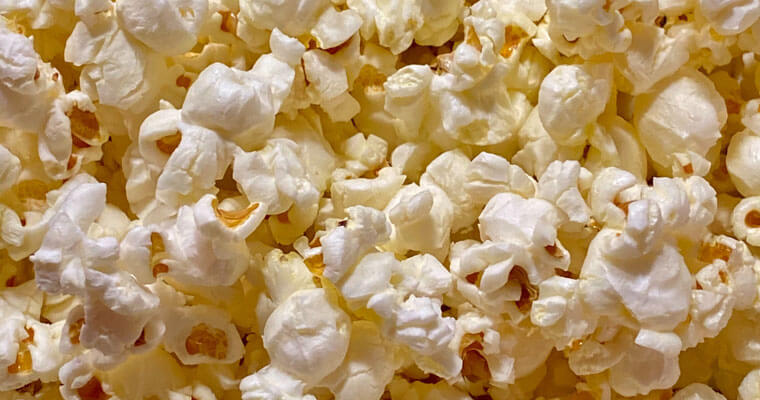
Snack Attack
No one's immune, and there will be times when you need a snack. Portion control is important here, because although calorie-dense foods may be appropriate for a snack when eaten in small amounts, they can easily blow your calories for the day if you eat too much. Foods such as raw vegetables are much lower in calories and so can be eaten in larger amounts.
When hunger strikes, try some of these snacks:
100 calories or less
- 3 cups air-popped popcorn
- ½ cup low fat cottage cheese
- ½ cup nonfat greek yogurt
- ¾ cup frozen mango cubes
- 2 tablespoons hummus with 8 baby carrots
- 3 whole grain crackers with 1 slice low fat cheese
- 1 cup of tomato soup
- 6 dried apricots
- 20 olives
- 14 almonds
- 20 peanuts
- 25 pistachios
- 20 chocolate coated raisins
- 1 large hard-boiled egg
- 1 tablespoon peanut butter
50 calories or less
- 2 Laughing Cow light cheese triangles
- 2 slices melba toast
- 2 Hershey's Kisses
- 1 Light Babybel
- 1 Jaffa Cake
- ¾ cup tomato or vegetable juice
- ½ cup blueberries or raspberries
- ½ cup fresh cherries
- 3 fresh apricots
- ½ medium banana
- 1 medium kiwifruit
- 1 small apple
- 1 peach
- 15 grapes
- 10 olives 5
10 calories or less
- 1 cup romaine lettuce
- 1 medium dill pickle
- 1 cup fresh spinach
- 1 celery stalk
- 1 strawberry
- 3 cherry tomatoes
- Black coffee (without sweetener)
- Black or green tea (without sweetener)
- Diet/zero-calorie drinks
Low calorie day flavourings and food substitutes
Use as many and as much of these as you like. The more flavourful your food, the more it will satisfy you:
- Fresh or dried herbs and spices
- Garlic
- Fresh ginger
- Tabasco or Worcestershire sauces
- Lemon juice
- Vegetable broth
- No-calorie salad dressings/vinaigrettes
- Flavoured vinegars
- Mustard (low sodium)
- Chilli peppers
- Salt and Pepper
Exercising during your diet
Intense or prolonged physical activity can affect your low day calorie requirements. For example, slow jogging for one mile (which takes most people about 20 minutes) burns about 100 calories, allowing you to add 100 calories to your low day intake. Just be aware that you need to be very honest with yourself about how many extra calories you are burning. Therefore, if it takes you more than 20 minutes to jog a mile or if you don't complete a full mile, make sure you adjust accordingly.
When to weigh and when not to weigh
Because your weight will naturally fluctuate from day to day, don't weigh yourself more than once a week and always weigh yourself on the morning following a lower calorie day. You could very well see a variation in weight of as much as 3 to 4 pounds from a higher calorie day to a lower calorie day. It's a good idea to take measurements as well, to get a better idea of how your body is changing.
15 Foods for maximum weight loss
Include 3 of the below 15 foods in every meal, and you'll not only maximize your fat loss, but your good health too. Of course, this is purely your choice, but for the most effective weight loss, you should aim to eat these foods as often as possible.
Each entry includes the following information:
- Nutrition: The main nutrients that will help improve your fat loss and health
- Friends: Alternatives you can eat
- Impostors: Foods you cannot use as replacements
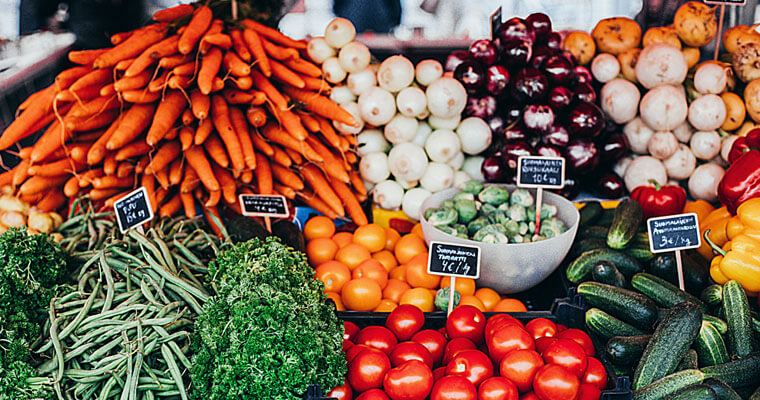
1. Almonds, brazil nuts, walnuts
Nuts are packed with protein, vitamins, minerals and heart-healthy, monounsaturated fat (good fats) which will help fill you up for longer. Almonds, brazil nuts and walnuts are the best type to eat for weight loss. But because they are high in calories and fat, don't eat too much. Just a small handful a day will do to fight cravings. You can introduce them into your diet by adding chopped nuts to oatmeal, cereal, yoghurt, and even to ice cream. You can also fight cravings by having some for a snack before a meal, followed by a glass of water to suppress your appetite. The water will cause the fibre in the nuts to expand in your stomach, making you feel fuller.
|
Nutrition |
Fibre, potassium, vitamin E, fibre magnesium, phosphorus, calcium, iron |
|---|---|
|
Friends |
Pumpkin seeds, sunflower seeds, avocados |
|
Impostors |
Smoked nuts, peanuts, salted and candied nuts |
2. Green vegetables
Densely packed with important nutrients, vegetables are a crucial part of any healthy diet. They help protect the body from lifestyle diseases such as heart disease, cancer, diabetes, stroke, and Alzheimer's. There are plenty of different ways to prepare vegetables. Try stir frying them with a little fresh garlic and olive oil, juice fresh vegetables for a healthy smoothie, or steam them as a side for your main meal.
|
Nutrition |
You name it, they have it. Green vegetables are filled with vitamins, minerals, fiber, phytochemicals and bioflavanoids |
|---|---|
|
Friends |
Brightly coloured vegetables, such as red, yellow, and orange peppers, which have a high antioxidant content |
|
Impostors |
None |
3. Coloured fruits, berries and vegetables
The more raw fruit and vegetables you eat, the healthier you will be, and the brighter the colour of the fruit or vegetable, the more potent the antioxidants they provide. Yams are a great low-glycemic food that are released slowly into your system and won't spike your blood-sugar levels. Yams and sweet potatoes are chock full of antioxidants as well as low in calories and very filling.
|
Nutrition |
Antioxidants, fibre |
|---|---|
|
Friends |
Apples, grapefruit |
|
Impostors |
Fruit jellies with added sugar |
4. Beans
Like the song says, beans are good for your heart. They also provide protection against cancer, heart disease, high blood pressure, and obesity. Beans are so balanced with protein, fiber and fat that you can replace a meat dish with a bean dish without worrying about the saturated fat. The fiber and protein in them will fill you up and help keep your energy and blood-sugar levels in check, preventing cravings. The best, most nutritious beans are soy, pinto, garbanzo, navy, black, white, kidney, lima, red. Add beans to soups, pasta dishes, or throw some in your scrambled eggs.
|
Nutrition |
Fibre, protein, iron, folate, bioflavanoids |
|---|---|
|
Friends |
Lentils, bean dips, hummus, edamame |
|
Impostors |
Refried beans high in saturated fats, baked beans high in sugar |
5. Lean beef, chicken, turkey
Protein is the basis of any solid diet plan. It takes more energy for your body to digest the protein in meat than it does to digest carbs and fat, so the more protein you eat, the more calories you will burn. Protein also helps build muscle, and the more muscle you have, the more calories your body will burn. If you are exercising regularly, you should be eating plenty of protein every day. But it must be lean meat because this has a relatively low fat content.
|
Nutrition |
Protein, iron, zinc, creatine, vitamins B-6 and B-12, phosphorus, and potassium |
|---|---|
|
Friends |
None |
|
Impostors |
Meats high in saturated fat, such as sausage, bacon and cured meats |
6. Oatmeal
Oatmeal/porridge is loaded with fiber which expands in your stomach to fill you up and help curb your appetite for longer. Oatmeal also has cholesterol-lowering benefits and can help protect you from heart disease. Start your day with a bowl of porridge to help get you through mornings when you are dragging, have some an hour before a workout to boost your energy levels, or a bowl in the evening to stop a late-night binge. Be sure to buy the unsweetened, unflavoured variety and use other power foods such as berries to enhance the taste.
|
Nutrition |
Complex carbohydrates and fibre |
|---|---|
|
Friends |
High-fibre cereals like Grape Nuts, All Bran, Fibre One, Special K, Fruit & Fibre |
|
Impostors |
Cereals with added sugar and high-fructose corn syrup |
7. Eggs
The egg has received a bad rap over the years for its high cholesterol content. Just two eggs contain enough cholesterol to put you over the recommended daily allowance. However, research has now found that cholesterol levels do not rise as a result of eating dietary cholesterol; they rise by eating dietary fat. The protein found in eggs has the highest biological value of any other food, making it more effective for the body to use in building muscle and burning fat, so in fact, eggs should be a regular part of your diet.
|
Nutrition |
Protein, vitamin B-12, vitamin A |
|---|---|
|
Friends |
None |
|
Impostors |
Egg Beaters |
8. Whole grains
When eaten in their natural state and not refined, whole grains and rice are excellent sources of carbohydrate to provide you with energy. Whole grains still contain all the most nutritious parts of the grain; the bran and germ, so retains all its vitamins, minerals and fiber. Processed, refined grains strip away all of these however, so stay away from these.
|
Nutrition |
Fibre, protein thiamin, riboflavin, vitamin E, magnesium, calcium, niacin, pyridoxine, zinc and iron |
|---|---|
|
Friends |
Brown rice, brown bread, wild rice, quinoa, barley, oats, bulgur, millet, spelt |
|
Impostors |
Processed bakery products, white bread, white rice, bagels, dough |
9. Olive oil and coconut oil
Rich in monounsaturated good fatty acids (good fats), olive oil and coconut oil should both be included in your diet. Olive oil, the key ingredient in Mediterranean diets, is known for its cholesterol lowering, digestive and various other health benefits. It's monounsaturated fats also help you feel fuller. Extra virgin olive oil is the best quality olive oil. Coconut oil contains healthy medium chain saturated fatty acids (MCTs) which as well as boosting your metabolism and energy levels, is not stored by the body as body fat. Coconut oil is naturally solid, so you can melt it into hot water or herbal tea and drink it, or use it to cook with.
|
Nutrition |
Good fatty acids, vitamin E, vitamin A, chlorophyll, squalene, and lots more cardio protective nutrients and antioxidants |
|---|---|
|
Friends |
Flaxseed oil, fish oil, canola oil in moderation. |
|
Impostors |
Vegetable oil, margarine |
10. Nut butters
Nut butters contain the same properties and benefits as the nuts themselves, but they made the list because of their versatility. Spread them on apples or celery, blend them into smoothies, or mix them into oatmeal. But be careful how much you eat, because they do contain a lot of monounsaturated fat. Choose the all natural brands and have no more than three tablespoons a day.
|
Nutrition |
Fibre, potassium, vitamin E, fibre magnesium, phosphorus, calcium, iron |
|---|---|
|
Friends |
Almond butter, cashew butter, all natural organic peanut butter |
|
Impostors |
Sugary, trans-fat filled peanut butters such as Jif, Skippy and Sun-Pat |
11. Vegetable juices
Juicing raw fruits and vegetables is a great way to pack in lots of nutrients in a small amount of time and makes it much easier to meet the recommended amount of fresh fruit or vegetables per day. If you're not a big fan of fruits and veg, juicing makes it easier for you to get them into your day. Just make sure you drink it as soon as it's juiced, and ensure you still eat some whole fruits and vegetables, because much of their healthy fiber is lost during juicing.
|
Nutrition |
All of your antioxidants, minerals and phytonutrients |
|---|---|
|
Friends |
Raw fruit or vegetables |
|
Impostors |
None |
12. Hempseed
Hempseed is considered to be one of the most nutritious food sources on the planet and is what is known as a superfood. The hemp seed is full of easily digested proteins, vitamins, enzymes and essential fatty acids such as omega-3 and omega-6. Just two scoops of hemp protein contain 14 grams of fibre, 11 grams of protein, and 3 grams of fat. Hemp is an excellent energy source and provides natural blood sugar control, helping curb hunger and cravings.
|
Nutrition |
Complete amino acid profile, protein, fibre, iron, calcium, vitamin E, Omega-3 fatty acids |
|---|---|
|
Friends |
Flaxseed, fish oil, quinoa. |
|
Impostors |
Soy |
13. Whey protein powder
Whey protein powder will give you the most protein for the fewest number of calories. It is a very versatile food that should be included in your diet, especially if you are exercising regularly. You can add it to oatmeal, smoothies, cereal, and healthy, wholemeal breads, cookies, and muffins.
|
Nutrition |
Complete source of all essential amino acids, protein, glutathione, cysteine. |
|---|---|
|
Friends |
Ricotta cheese |
|
Impostors |
Soy protein |
14. Wild caught salmon
These cold-water fish contain healthy Omega-3 fatty acids instead of saturated fat. Omega-3 fatty acids decrease a hormone called leptin, which is responsible for storing body fat. The lower your leptin levels, the easier it is to burn fat. Only eat wild caught fish. Fish like Atlantic salmon are bred in pens in the open ocean on farms and are fed an unnatural diet, causing them to have very little Omega-3 in their fat.
|
Nutrition |
Protein, Omega-3 fatty acids |
|---|---|
|
Friends |
krill, sardines, wild game meat, free-range beef |
|
Impostors |
Fried fish, Atlantic salmon, farm-raised fish |
15. Organic whole milk, cheese, yoghurt
Protein rich and good sources of calcium, milk and dairy foods provide many essential nutrients. They are an important part of a healthy diet but should be used sparingly if you are trying to lose weight. Yogurt contains probiotics; good bacteria, that help with digestion and improve your gut health. For the best bene- fits, you should consume dairy products that are as lightly pasteurized as possible, and aim for organic produce.
|
Nutrition |
Calcium, protein, vitamins A, D, B-12, riboflavin, phosphorus, potassium, CLA. |
|---|---|
|
Friends |
Almond milk, rice milk or hemp milk |
|
Impostors |
Skimmed milk, frozen yogurt |
Supplementation during your diet
Losing weight can be a lot harder if you are lacking in certain vitamins and nutrients.
While there isn't any magic pill you can take that will make you lose weight, there are various supplements that will certainly help improve your overall health, meaning your body is much more efficient at burning fats. Feed your body the proper building blocks and losing weight will be much easier. You may want to consider adding some of the following supplements to your alternate-day diet plan.
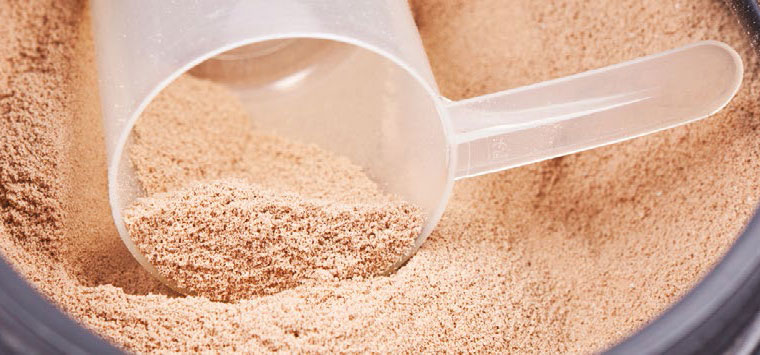
Multivitamins and minerals
The majority of people do not get enough vitamins and minerals, so this is one of the most important supplements you can take. A good multivitamin will provide your body with everything it needs to perform at optimum efficiency. The more active you are, the more need you will have to take a multivitamin supplement.
Recommended multivitamin:
Bauer Nutrition A-Z Multivits & Minerals
B Vitamins
B vitamins are essential for almost every function in your body. From supporting a healthy metabolism and improving energy levels to maintaining nervous system function and helping with cell growth and division, there isn't much your body does that it doesn't need B vitamins for. Like multivitamins, most people are lacking in B vitamins, so this is also a very important supplement you should consider taking. There are several different B vitamins, so a vitamin B complex will ensure you get all of them.
Recommended B vitamins:
Bauer Nutrition Vitamin B Complex
Fish Oil
A good quality fish oil is important to provide you with essential omega-3 fatty acids. These are crucial to maintaining heart, brain and eye health, and also act as a natural anti-inflammatory. Studies have also shown that supplementation with fish oil can also help you lose weight, because it can help your body minimize fat storage as well as help decrease your appetite.
Recommended fish oil supplements:
Bauer Nutrition Cod Liver Oil, Bauer Nutrition Fish Oil
Super Greens Powder
Made from pure superfood ingredients such wheat grass, barley grass, spirulina, alfalfa and more, greens powders are an extremely rich source of nutrients that will detox your body and help balance your body's natural PH levels. The benefits of this are improved energy levels and an improved digestive and immune system. This is an ideal supplement to take during the phase one pre-diet detox. Just add it to water, smoothies or your meal replacement shakes.
Recommended super greens powder:
NUYU Superfood
Capsaicin (Chilli Pepper Extract)
The active ingredient in chilli peppers - what makes them so hot - is capsaicin. Capsaicin creates a thermogenic effect in your body which increases your metabolism, helping your body burn more calories and more fat. It can also help suppress your appetite. Capsaicin is the main ingredient in a number of fat burning pills.
Recommended capsaicin supplement:
Capsiplex
Glutamine
An often overlooked amino acid, glutamine can give you an edge on your fat burning program by enhancing your energy levels to give you more productive workouts, as well as helping prevent the breakdown of muscle. As you know, muscle helps burn fat, so maintaining it is essential to fat loss.
Recommended glutamine supplement:
Bauer Nutrition L-Glutamine Powder
Green Tea
Green tea is packed with powerful polyphenols, phytochemicals and antioxidants that can help boost your metabolism and encourage your body to burn fat. Oolong tea and yerba mate are also beneficial for the same reasons. Green tea is commonly available in most shops and you can drink it hot or cold. If you need to sweeten your tea, use a natural sweetener. You can also get green tea supplement tablets and capsules, which you may find more convenient to fit into your daily routine.
Recommended green tea supplement:
Bauer Nutrition Acai Berry with Green Tea
Protein Powder
Whey protein contains all the essential amino acids as well as boasting the highest protein quality rating among all proteins. A high-quality protein will provide you with crucial amino acids and proteins to support your body's optimal metabolic rate and fat burning level. It will also help you build muscle and boost your energy levels.
Recommended whey protein powders:
612 Protein, Body Fuel High Grade Whey Protein 80, Body Fuel Quattro 90 Plus Protein
Like this?
Try this...
Diet Health and wellbeing Eating
3-Day Detox Plan
Diet Health and wellbeing Eating
A Brief Introduction to Detoxing and Weight Loss
Read more about A Brief Introduction to Detoxing and Weight Loss
Health and wellbeing Diet Eating
Nutrition Guide
Health and wellbeing Supplements
Supplements Guide
Weight loss Exercise Muscle building


